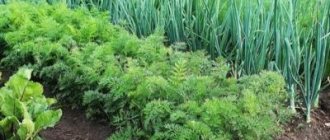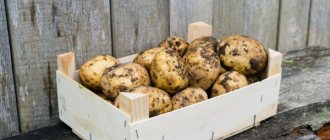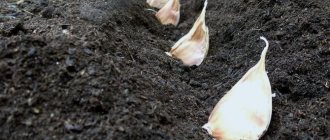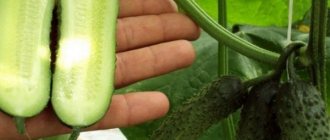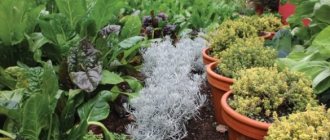Every summer resident who expects to get a rich harvest should know the best varieties of carrots for growing in open ground Carrots are one of the most popular vegetables in Russian cuisine, without which not a single classic dish can do.
This vegetable contains many substances beneficial to the body, such as potassium, calcium, chlorine, magnesium, phosphorus, iron, as well as vitamins B1, B2, B6, C, K, A, PP, E. Root vegetables are used as food, as well as for medicinal purposes. Therefore, many gardeners are happy to plant carrots in their dacha or yard. And the vegetable pleases gardeners with its beneficial properties, taste and ability to be stored for a long time. Summer residents grow varieties of carrots of different ripening periods in order to have a vitamin table throughout the year.
Many gardeners who decided to grow this root crop for the first time are wondering: what varieties of carrots are best to plant?
Criteria for selecting varieties
The criteria for choosing a variety are:
- Keeping quality - the ability to be stored for a long time;
- Vitamin content - the total percentage of saturation with useful substances;
- Taste - there are sweet varieties, there are more bland ones;
- Appearance;
- Speed and time of ripening: all varieties can be divided into early, middle and late;
- Purpose of cultivation: all varieties of carrots are divided into fodder and table varieties;
- Productivity is the ratio of the mass of the harvest obtained and the area on which it is grown.
To choose a variety for sowing, you need to decide on the purpose for which the carrots will be grown. If the main goal is sales, then it is better to focus on such criteria as keeping quality, appearance, and transportability. which variety of carrots is better later in the article.
Carrots, photo description
Carrots are usually called biennial plants, as well as their root crops of the same name. The homeland of the vegetable is Afghanistan. For quite a long time, people grew it not for the root vegetable that is used for cooking today. At that time, its leaves were widely used in the manufacture of various seasonings.
There are many varieties of carrots. Based on the type of variety, the weight of the root crop can vary from 50 to 300 grams. Today there are varieties whose root weight can reach 500 grams. The root crop has a rather elongated shape. It is somewhat reminiscent of a cone in appearance. The color of root vegetables varies, ranging from light yellow to orange.
The vegetable pulp has two parts: the first part is the outer shell, the second is the core. Varieties have different taste qualities, shape, and color of the core. The core is much tougher, and in taste, it is not as sweet as the outer shell. It is generally accepted that a good fruit has a small core.
Thanks to its beneficial properties and unsurpassed taste, today this vegetable is very popular in many countries around the world. It is consumed raw, without preliminary heat treatment, used as the main ingredient for making juices, and actively used in the preparation of various dishes.
Attention! It is harmful to overuse carrot juice. A large amount of this juice can cause lethargy, headaches, as well as vomiting and drowsiness. People who suffer from diseases such as gastritis and stomach ulcers should not abuse carrot juice.
Previously, this culture was used as one of the main ingredients for treatment and preventive measures of various diseases. It is recommended for use by people suffering from ailments such as anemia, bronchial asthma, and tuberculosis. It should be used as the main element in cooking, during the onset of liver and kidney diseases, and during the onset of diseases of the cardiovascular system.
Early good varieties of carrots for open ground
If you need a quick harvest for the spring table, you can get it by planting early-ripening carrots. Its ripening time, from the formation of the first shoots to the harvesting of root crops, ranges from 80 to 100 days. Below we describe the best varieties of early carrots, which not only ripen early, but also give a good harvest and are also easy to care for.
Variety Laguna F1
A hybrid with a very short ripening period of approximately 80 days.
- The root crop has a bright orange color, a cylindrical shape and is
- about 17-20 cm in length.
- Laguna F1 has excellent taste and has a good presentation - all root vegetables are smooth and beautiful.
- Laguna grows well in almost all regions with a temperate climate and takes root in any soil, both clayey and black soil.
- The average yield of this type of carrot is 5-7 kg per square meter.
- Laguna is planted by sowing in open ground.
Laguna F1 is a variety that is resistant to various diseases, but it is better to avoid high soil moisture when sowing. Many summer residents purchase carrot seeds of this variety as the best for open ground.
Variety Alenka
This type of carrot is bright orange in color, has the shape of a cone with a blunt end, and is 14-16 cm long. The taste of the variety is high, the root crops ripen very juicy and rich in vitamins.
This vegetable is demanding on moisture and loose soil, but is resistant to various types of diseases. Grows best in black soil. Alenka has a high yield, the average yield of this variety is 6-9 kg per square meter.
Planted by sowing in open ground. It is important to know: when sowing carrots with dry seeds, the seedlings will have to wait longer, since the seeds will take time to swell. In order for this plant, which requires soil moisture, to germinate faster, you can first prepare the seeds and allow them to swell and germinate. In this case, the shoots will sprout quickly, but there will be an increased need to monitor the humidity level - it should remain high.
Variety Tushon
If you are looking for seeds of the best varieties of carrots for open ground, you can also pay attention to the early-ripening carrot variety Tushon.
- The yield of this variety is 5-8 kg per meter.
- The root itself is about 15-16 cm long, has a smooth surface and bright orange juicy pulp.
- This vegetable contains about 17 mg of carotene per 100 grams of pulp, so it has high beneficial properties.
- Tushon has a short ripening period of about 70-80 days from the moment of sowing; it is better to plant it in April, early spring. It is better not to store this variety of carrots for a long time, but to immediately use it for food or for preparing preparations.
- You can sow this type of carrot directly into the ground. It is resistant to cold, disease and bloom.
Carrot Caramel
Caramel has a rich, rich taste, contains a lot of sugar and carotene, and is often used in baby food due to its excellent taste and beneficial qualities. The root crops of this plant also look good: rich orange color with a smooth surface, conical acute-angled shape, root length from 15 to 17 cm. Productivity from 5 to 8 kg per meter. Important: caramel carrots are highly resistant to diseases and pests. This allows you to refrain from chemical treatment, which is also important for vegetables used in baby food.
Variety Favorite
Favorite carrots have a rich sweet taste and juiciness, and contain a lot of carotene and sugar. This variety has a cylindrical shape, about 15-16 cm in length, and does not crack during storage.
Important! This is one of the types of early ripe carrots that can be stored for a long time. Favorite is also sown in open ground in spring or autumn.
Further care
After sowing carrots before winter, the gardener can only exhale and wait for the arrival of spring. From the moment the snow melts, the most interesting part begins - caring for the plantings.
The first thing to do is remove the mulch from the beds. To speed up the emergence of seedlings, low arcs are placed over the beds and film or non-woven material is secured. After a stable average daily temperature of +15°C and above has been established, the shelter is removed.
The first watering is carried out after the top layer of soil has dried.
With the first shoots, regular weeding begins. It is important to prevent the appearance of an earthen crust, which impairs the aeration of the underground part of the plant. Weeds are removed as they grow.
At the beginning of the growing season, the soil is enriched with nitrogen, phosphorus and potassium. Organic compounds are not recommended.
Further care is no different from caring for spring plantings:
- Thinning the crops after the appearance of 2-3 true leaves. A gap of 3-4 cm is left between the sprouts. The procedure is repeated after two weeks, leaving a distance of 4-5 cm. The soil is moistened, the greens are pulled out without loosening, so as not to damage the main root to the neighbors, otherwise the root crop will grow “bearded”. Holes in the ground are filled and compacted.
- The beds are hilled up as the carrots grow, sprinkling the tops with soil. The areas that are outside turn green and solanine accumulates in them, which gives the roots bitterness.
- Carrots require moderate watering. Root crops form at the end of the growing season and do not tolerate excess moisture well, becoming covered with cracks. In drought, the beds are watered three times a week, and in moderate weather - 1-2 times a week. Watering rate - 4 liters per 1 sq. m. As the root crops grow, the water consumption is increased to 8-10 liters per 1 sq. m. m.
The plant is fed from the moment 3-4 true leaves appear:
- I feeding: 25 g of “Nitrophoska” per 10 liters of water;
- II feeding after two weeks: 1 liter of wood ash per 10 liters of water.
To prevent carrot flies, onions, marigolds, cilantro, and garlic are sown next to carrots. The strong smell of plants repels insects.
The most effective way to prevent the spread of the pest is to cover the beds with lutrasil or spunbond. Dense non-woven fabric prevents flies from penetrating into the ground where they lay eggs.
Harvesting after winter sowing is carried out in late June - early July. Carrots sown in spring are just ripening during this period.
Mid-season carrot varieties
Mid-season varieties have a longer ripening period, but in most cases they are stored longer. When growing varieties of mid-season carrots, you need to take into account the fact that seedlings appear slowly. Tip: to mark the beds, you can mix the seeds of mid-season carrots with “lighthouse” crops. And then you will see where the bed is located even before the first shoots have sprouted. Below are the most popular varieties of carrots, which are best to plant in spring or summer.
Variety Chantane
The French hybrid, which has taken root very well in Russia, has universal qualities: ease of storage, pleasant taste and appearance. The root vegetables have a pronounced orange color, are 12-15 cm long and have a conical shape. This hybrid is unpretentious, grows in almost any soil, is resistant to cracking and can be stored for a long time.
Planted in late spring or summer, ripening period is 100-120 days depending on the climate.
Variety Perfection
If you are thinking about which variety of carrots is best stored, pay attention to Perfection carrots. It has sweet, juicy, conical-shaped root vegetables that have high shelf life and excellent taste.
The ripening period of this vegetable is about 120-140 days from the moment of sowing. Without special requirements for soil composition, it grows almost anywhere.
Variety Vitamin
Of the mid-season varieties, it has the highest yield of up to 10 kg per meter, as well as excellent taste and richness of nutrients in its composition. The root vegetables are shaped like a thick cone about 16 cm long.
This is a universal variety, suitable for both fresh cooking and canning and stewing. Vitamin carrots have a high shelf life and can be stored in winter.
Grows well in sandy and loamy soil. Sown in open ground around the end of April.
Carrot Losinoostrovskaya
If you need a variety that is easy to care for, but has universal characteristics, you can try these carrot seeds of the best variety. Reviews from most summer residents about Losinoostrovskaya carrots are positive. As well as shelf life, taste and benefits.
- This is a popular variety among summer residents, having a good composition, taste and appearance.
- The roots are cylindrical in shape with an expanded base, as well as many lateral filiform processes.
- Carrots have a large amount of carotene in their composition, which tends to increase during storage (up to 25 mg per 100 g).
- These carrots can be stored for a long time.
- The yield is about 4-7 kg per meter.
- It is planted in open ground and grows equally well in any soil. Demanding on moisture.
Important! If, when watering, pieces of the root are exposed, it is better to sprinkle them with soil to prevent the accumulation of harmful substances at the tip of the rhizome and spoil the taste.
Carrot Nantes
It is also a very popular and well-known variety of carrots, suitable for almost any food preparation, as well as long-term storage. It has excellent keeping quality, cylindrical root crops, about 14-17 cm long and with juicy tender pulp, characterized by a high content of carotene. Planted by sowing in open ground in April-early May or in summer. Suitable for pre-winter planting.
Carrot Gourmand
This carrot variety is considered a leader in taste, it is very tasty,
juicy and sweet, rich in carotene and sugar, often used in baby food and dietetics. This variety combines its taste qualities with a relatively high yield of 5 kg per square meter and relative unpretentiousness. This carrot variety is considered the best for planting in the summer. This is a mid-season variety, the time from sowing to harvesting is about 90-110 days.
Moscow winter carrots
A high-yielding variety of carrots with good taste and rich carotene content.
- The root crops are cylindrical in shape, with a smooth surface, with an average size of about 15 cm.
- The yield of this variety is about 6 kg per meter.
- High keeping quality. When sown in summer, carrots can be stored until the next harvest.
- The variety can also be used for sowing before winter.
Carrot Samson
The variety has good taste characteristics. Root vegetables are cylindrical in shape with rounded edges.
The yield of this variety is up to 8 kg per meter; in addition to its yield, this variety is resistant to negative environmental factors, diseases and pests.
The variety has a high shelf life; Samson carrots can be stored all winter.
Important! Before storing carrots, you need to prepare them: cut off the tops, and keep the root vegetables for a week in a cool, ventilated and dry room. This will increase the keeping quality and safety of the fruit by another 30%.
When to sow carrots in the fall?
The timing of sowing carrot seeds determines the further development of the crop. If this process is carried out too early, the emerging sprouts will not have time to adapt to the cold and will die at the first drop in temperature. With late planting, the probability of germination is low. When choosing a suitable day for sowing, it is necessary to take into account not only the recommendations of the lunar calendar, but also the climatic features of a particular region. This will be discussed in more detail.
Planting calendar dates
Theoretically, winter sowing of vegetable crops involves the entry of dry seed material into frozen soil to prevent its rapid germination. In this regard, experienced farmers advise planning winter planting of carrots from late autumn to the second ten days of February. It is important that the grains end up in the ground without snow cover after a severe frost. Since it is difficult to wait for the right conditions to coincide in winter, it is advisable to sow the vegetable at the end of November.
Important! When sowing carrots in winter, it is recommended to increase seed consumption by 25%. This is done to insure against expected losses during snowless winters, thaws, and severe frosts.
.
Weather
To protect future seedlings from freezing, it is advisable to plan sowing winter carrots when a stable air temperature is at least +5°C and the soil freezes to 0...–1°C. However, in some regions heavy rainfall is possible at the end of autumn, as a result of which the grains become saturated with excess moisture and rot. You can avoid this by waiting for frost.
Features of planting by region
Due to significant differences in climate in different regions of Russia, it is important to focus on weather conditions when choosing carrot sowing dates.
In outskirts of Moscow
In areas of the Moscow region, vegetable crops will grow well if they are sown during the climatic winter (which does not coincide with the calendar and astronomical ones). This means that the air temperature must remain stably below 0°C. Similar conditions in the Moscow region have been observed since the second ten days of November.
Did you know? In the 17th century, English court ladies decorated their hats with lush carrot tops. The plant was popular because of its pleasant aroma, long-lasting freshness, and also its sophistication.
In the Urals
In order for carrot seeds to undergo natural stratification in the harsh Ural winter, it is recommended to plant them in mid-October. In this case, it is important to wait until the soil freezes and take into account the weather conditions. To preserve the planting material, it is advisable to mulch the beds with compost, humus or sawdust in the winter.
In Siberia
Over the vast territory of Siberia, the period of onset of climatic winter differs significantly, so the main guideline for vegetable growers remains weather conditions. Sowing carrots before winter is important when the ground is frozen and snow has not yet fallen.
Find out about the most productive carrot varieties for Siberia.
In the Leningrad region
The climate of this region is characterized by high humidity and moderate temperatures, so sowing winter vegetables can be planned for mid-November.
Late varieties of carrots
Of the later varieties, we will present those that have the best reviews. The carrot variety Vita Longa, Carlena, Red Giant, of course, known to many summer residents as the Queen of Autumn.
Variety Vita Longa
Root vegetables have a uniform bright color and contain a very large amount of carotene and other vitamins, and carotene tends to increase during storage, as in many other winter varieties.
The root vegetables are not very large, conical in shape.
Vita Longa carrots are planted at the end of April.
Variety Karlena
High-yielding late-ripening variety.
Its yield is about 6-7 kilograms per square meter, and the growing season is about 120 days. The color of the fruit is deep red, the shape of the roots is conical. Karlena contains a lot of carotene and sugar, so it has a bright and rich taste, and is also very healthy. This variety of carrots has a high shelf life and is suitable for long-term fresh storage. The storage area must be dry. Carrots are planted in April and harvested around mid-September.
Variety Red giant, without core
It has long, bright red fruits with an excellent rich taste. Contains a large amount of nutrients, carotene and sugar. Red carrots are very juicy.
It is stored for a long time, planted in the summer, harvested in the fall, in September or even October. The growing season is relatively short, about 100-110 days.
Variety Queen of Autumn
A mid-late variety with high yield and good taste, having root vegetables of an even cylindrical shape, with orange-red, aromatic, very sweet pulp. The yield is 8-10 kg per meter, has high shelf life, and can be stored for a very long time. Watch the video! Review of carrot varieties
Caring for winter carrots in spring
If the weather is good, we will have some work to do in the garden in the spring. Do not allow the soil to dry out - water often so that it is evenly moist if the weather is very dry. At the same time, this vegetable cannot tolerate waterlogging of the soil and rots even with slight stagnation of water during seedling growth. Therefore, it is important to weed the beds in a timely manner to remove weeds - this is the most labor-intensive task, but necessary, and to loosen the rows.
If the shoots turn out to be friendly and dense, be sure to thin them out, leaving a distance of 6-8 centimeters between them, otherwise the carrots will grow small.
If snails and slugs have previously been noticed on your site, even before the carrot tops go, prepare means of control - Thunder or other preparations for slugs.
As for fertilizing, it is enough to feed the carrots once with a complex fertilizer (for example, universal fertika, or nitrophoska) in the row spacing with incorporation.
The most productive varieties of carrots
The most productive varieties of carrots are those whose yield exceeds 7 kg per 1 square meter.
These varieties will be:
Early ripening:
- Laguna (marketability 90%),
- Touchon,
- Amsterdam.
Mid-season:
- Nantes,
- Karotel (up to 9 kg per meter),
- Abaco , which has a yield of up to 11 kg per meter, is rich in vitamins.
Late ripening:
- red giant,
- Queen of Autumn.
Important! Productivity depends not only on the carrot variety, but also on the growing climate, conditions and care.
Technology for autumn sowing of carrots
Sowing carrot seeds begins after the soil freezes to a depth of 3-5 cm. If snow falls, it is simply removed from the beds. A 1-2 cm layer of earth is poured into the furrows to plant the seeds to a depth of 1.5-2 cm on loose soil and 1 cm on dense soil.
The seeds are sown thickly, covered with prepared soil mixture and mulched with peat, humus, compost, adding a layer of up to 3 cm. The first snow is raked into the beds.
If the winter turns out to be little snow and frosty, the beds are covered with spruce or pine needles, large branches, dry leaves, and sawdust.
Carrot varieties for planting before winter
Varieties that are suitable for planting before winter must be very resistant to temperature changes and vagaries of weather. Carrot seeds of the best reviewed varieties for planting before winter should be planted in open ground in the fall. They will overwinter in the soil and produce their first shoots in early spring.
These are varieties such as:
- The Queen of Autumn is planted before winter to obtain the earliest harvest.
- Losinoostrovskaya carrots perform well when planted before winter. Gives quick, friendly shoots in the spring.
- Carrots of the Krasa Maiden are rich in vitamins, an excellent option for planting before winter. With an early spring harvest, it is useful to drink the juice and eat it fresh.
- Shantane is a high-yielding variety that quickly ripens by spring when sown before winter.
- Moscow winter carrots are suitable for autumn sowing, tolerate winter well, and produce early shoots.
- Amsterdam carrots have good appearance and nutritional value. Suitable for spring and autumn sowing. It has a long shelf life and germinates early in the spring when sown before winter.
- Nantes carrots are the most winter-hardy and have high yields when sown pre-winter. At the same time, it is stored worse than the other varieties listed here. But it gives the earliest harvest.
Landing dates
The yield of vegetable crops depends on the timing of autumn sowing. It is important that the seeds do not have time to germinate before the onset of winter. If they germinate in the fall, then after the arrival of frost the seedlings may freeze, so no harvest will be obtained.
It is worth planting winter carrots only after the onset of stable cold weather and an average daily temperature within 0...+3°C. If warmer temperatures and rains are expected in the future, sowing the seeds will have to be delayed, otherwise they may germinate.
The optimal time for planting is at the end of October - beginning of November. In the conditions of the southern regions, carrots can sometimes be sown in late autumn, and in the northern regions - in the last days of September. The main thing is to sow at least a week before permanent frosts.
Carrots should not be sown too early or too late. In addition, it is undesirable to sow on the days of full moons and new moons.
The best varieties of carrots for storage
It is best to store carrots in a dry, not too warm room with an air temperature of 2 to 5 degrees Celsius. The room must be ventilated. The ideal place is a dry and clean cellar with an established ventilation system.
Mid-season and late varieties of carrots have the best storage ability.
- Carrot Red,
- Queen of autumn
- red giant,
- Shantanay,
- Monastyrskaya,
- Moscow,
- Touchon,
- Vita Longa,
- Losinoostrovskaya.
All of them, under favorable conditions, retain their taste and appearance until the next harvest.
Important! Before storing carrot roots, you should sort them out, leaving only the freshest. Only healthy and ripe fruits without external damage have high shelf life. After harvesting, there is no need to store carrots in a warm place so as not to shorten the shelf life. After harvesting, the carrots must be cooled for a couple of days, and only then stored.
Sowing seeds in the ground
With the arrival of persistent cold weather, a drop in temperature to +5°C and freezing of the soil to a depth of 5-8 cm, you can begin sowing seeds on the frozen ground. As a rule, favorable conditions occur in late October - early November. The sowing instructions are as follows:
- If the prepared area is covered with snow, carefully clear it with a broom.
- Pour dry seeds at a distance of 3-4 cm from each other into previously prepared grooves to a depth of 1 cm (for dense soil) or 3 cm (for light soils in dry areas). Seeds can simply be sown directly on the surface of the ground. To ensure accurate planting, it is better to use a special seeder for carrots, on which you can set the optimal sowing step. The seed consumption rate for winter planting is 0.8-1 g per 1 square meter. m. When planting in spring, this figure is 0.6-0.8 g per 1 sq. m. m.
You can also sow radish or lettuce seeds in the garden bed so that in the spring they will mark rows of carrots for more comfortable weeding and loosening of rows.
- Seed the seeds with pre-prepared dry soil, and then mulch the bed with organic matter with a layer of 3-4 cm. The mulch needs to be compacted so that it does not get blown away by the wind.
- At the first precipitation, rake the snow onto the bed and press it with spruce branches to cover the layer of mulch. In conditions of little snow in winter or areas with constant droughts, it is worth additional measures to retain snow in the garden bed. To do this, it needs to be covered with a layer of coarse mulch, for example, large branches, fallen leaves, spruce and pine spruce branches.
The crops do not need to be touched until the spring thaws, since in winter the seeds will simply “sleep” in the ground.
Review of the most delicious varieties of carrots
It is difficult to say which varieties of carrots are the best in terms of taste. It is worth noting that early-ripening varieties are the juiciest, while late-ripening varieties are the sweetest.
The following varieties have good taste:
- Samson,
- Carlena,
- red giant,
- Moscow winter,
- Nantes,
- Gourmand,
- Vitamin.
To prepare second hot dishes:
- Nantes,
- Shantanay,
- Lagoon.
For fresh preparation, making juices and baby purees, the ideal option would be:
- Gourmand,
- Perfection,
- Vitamin.
After which you can plant carrots
It is recommended to sow carrots after potatoes, onions, cabbage, tomatoes, melons and cucumbers. It’s good to alternate carrots with onions. Very good after green manure. As soon as the harvest of predecessor vegetables has been harvested from the garden bed, you need to remove all plant residues and plow the ground, while simultaneously incorporating mineral fertilizers into the soil. When applying organic fertilizers (fresh manure), carrots can be planted in this place only after two years. The beds need to be prepared before mid-October. Carrots have a high potassium requirement. You can add wood ash or potash fertilizers. Carrots have roots that go deep into the ground. Therefore, it is not recommended to plant after beets, parsley, and celery.
Features of growing carrots
Carrots are quite a demanding crop, but they are not at all difficult to grow, as it might initially seem. It is especially demanding on the condition of the soil on which it is planned to be planted. Weed-free soil is perfect for growing this crop.
It should be well loosened and also have good water permeability. The site used for planting this vegetable must have light, fertile soil. It is best to sow seeds where the soil has been properly fertilized with humus several years before the first planting.
Attention! An area with fresh, recently imported humus is not suitable for planting carrots. This is explained by the fact that the vegetable manifests itself negatively in the presence of fertilizers of this type. In addition, it should be noted that ultimately, due to the presence of fresh manure, branched root crops with poor taste characteristics grow.
It is not recommended to plant this vegetable in soil that has been previously fertilized with fertilizer, the composition of which contains an element such as chlorine. This is due to the fact that such soil promotes the development of root crops with excessive branching, as well as curvature. To ensure that the grown vegetable does not have a lot of tails, the soil should not be deoxidized immediately before the planting procedure.
You should always remember that the soil used to grow this crop should not contain large amounts of moisture. Otherwise, you will end up with a harvest with hairy, cracked roots. In addition, it would not be amiss to mention that an excessive amount of moisture provokes the growth of tops.
Samson
Another variety for which winter sowing is used. Samson differs from the rest in that it has very large root crops, they grow up to 200 g in weight. It stores well and withstands even harsh winters.
Related article:
Tired of thinning carrots? An effective way to plant carrots!
The only drawback is the rather low carotene content. This determines the not very bright color of the pulp.
Nantes
The growing season for this variety is only 100 days. During this period, not only does the vegetative part have time to develop, but also the root crop is formed. Nantes carrots are characterized by smooth, cylindrical fruits. They are rarely subject to deformation, so buyers willingly purchase them.
Gardeners value Nantes for its unpretentiousness: it grows well in different types of soil. After ripening, the upper part of the carrots partially protrudes above the surface of the soil, which simplifies harvesting.
Related article:
Sowing carrots: recommendations for sowing and care
Flakke
An early ripening carrot that develops well when sown in winter. It does not crack and has excellent taste characteristics. The variety is often chosen by those who pay attention to the environmental friendliness of vegetables: Flakke does not accumulate nitrates in its cells.
Related article:
7 good early varieties of carrots
